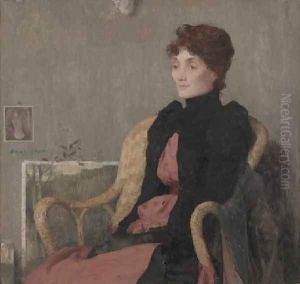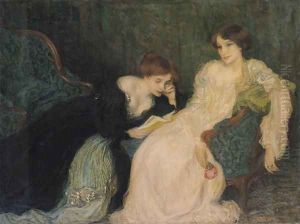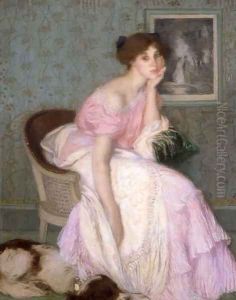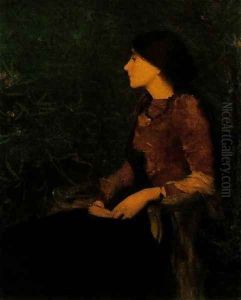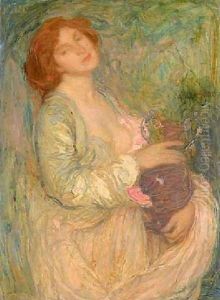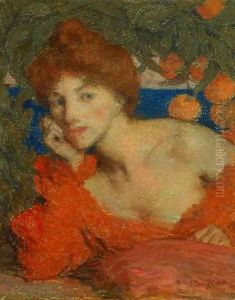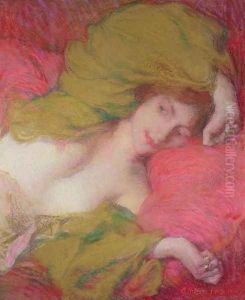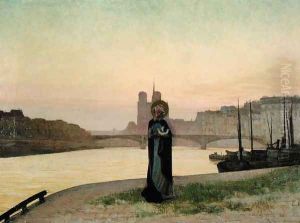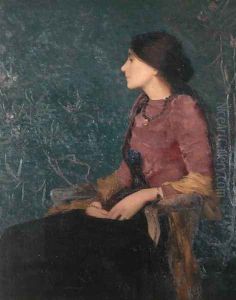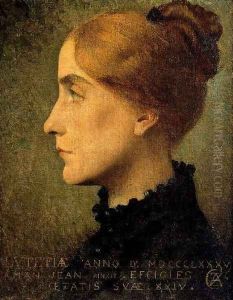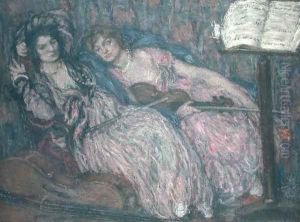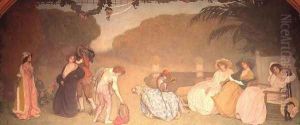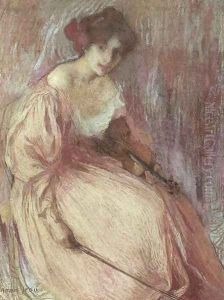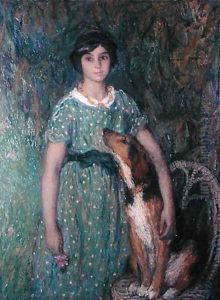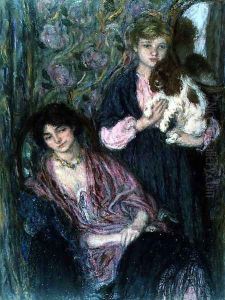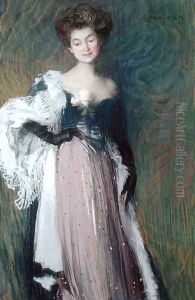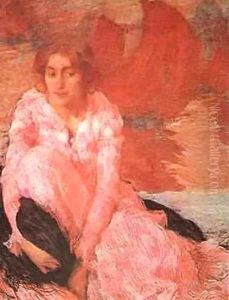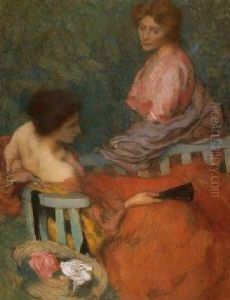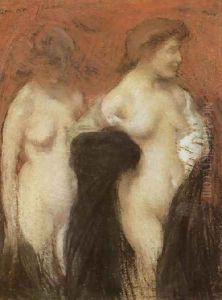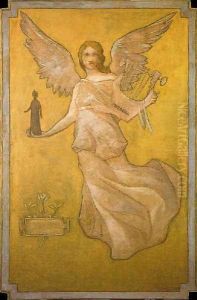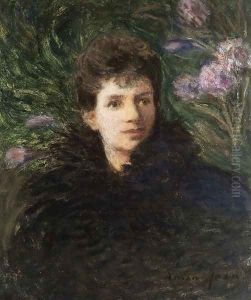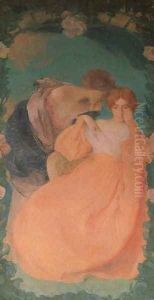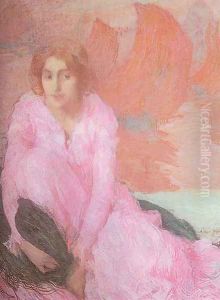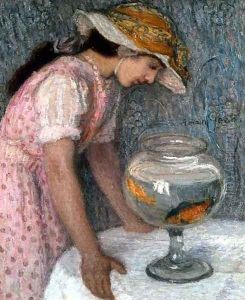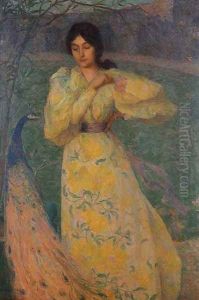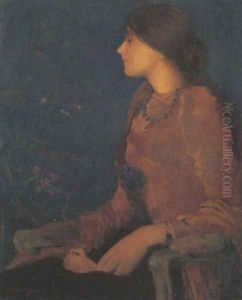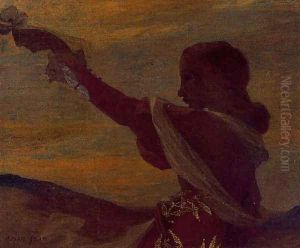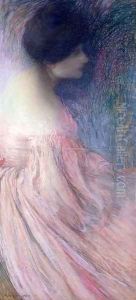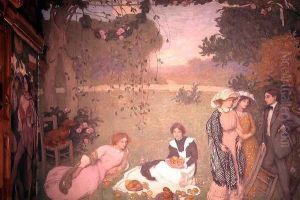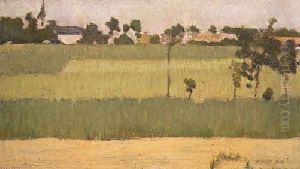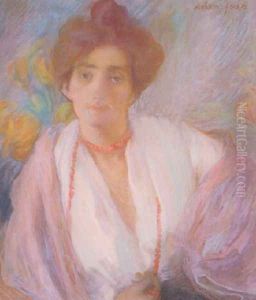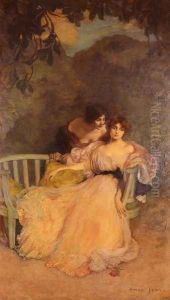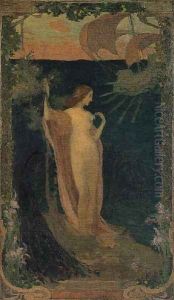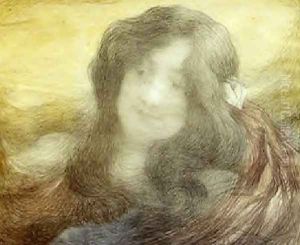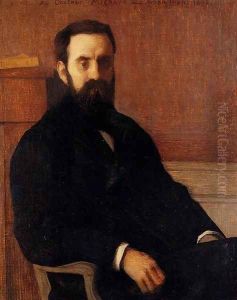Edmond-Francois Aman-Jean Paintings
Edmond-François Aman-Jean was a French symbolist painter, who was born in Chevry-Cossigny, a small commune in the Seine-et-Marne department, on January 13, 1858. He is known for his portraits and his delicate use of pastel tones, which was quite innovative during his time. Aman-Jean grew up in a creative environment and showed an early interest in the arts.
Trained at the École des Beaux-Arts in Paris, Aman-Jean was a student under Henri Lehmann, and he became friends with fellow student Georges Seurat, with whom he shared a studio. Aman-Jean and Seurat entered the studio of the famous French artist Pierre Puvis de Chavannes, where Aman-Jean was influenced by Puvis de Chavannes' symbolist style. Puvis de Chavannes' focus on allegorical themes and mural-sized works would inspire Aman-Jean's later career.
Aman-Jean initially gained recognition at the Salon of 1886 with a portrait of his sister, which showcased his distinctive, refined style. His works often depicted women in contemplative or melancholic states, frequently rendered with a soft, dreamlike quality. Aman-Jean's subjects were typically set against neutral or undefined backgrounds, which helped to focus attention on the figures themselves and their emotional states.
Throughout his career, Aman-Jean became closely associated with the Symbolist movement, which sought to express the more mystical and emotional aspects of the human experience, as opposed to the representational and often materialistic focus of realism. His paintings are characterized by a sense of mystery and an emphasis on the spiritual or otherworldly.
Aside from his painting, Aman-Jean also worked with pastels and was involved in the decorative arts, designing murals for public buildings and private homes. He was commissioned to create murals for the Sorbonne and the Hôtel de Ville in Paris. His work in mural painting often displayed his skill in creating large-scale compositions that harmonized with their architectural surroundings.
With his decorative and allegorical style, Aman-Jean contributed to the revival of fresco painting in France, and he became a respected figure in the Parisian art world. He was awarded the Legion of Honor in 1900 and became a member of the Académie des Beaux-Arts in 1924.
Aman-Jean continued to work and exhibit until his death on January 25, 1936, in Paris. His work remains in many public collections, including the Musée d'Orsay in Paris, and he is remembered as a key figure in the transition between traditional academic painting and the more experimental styles that characterized the turn of the century.

